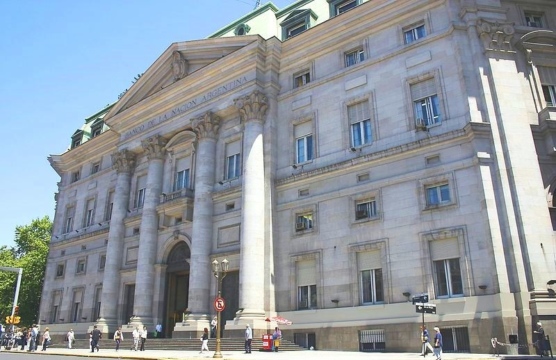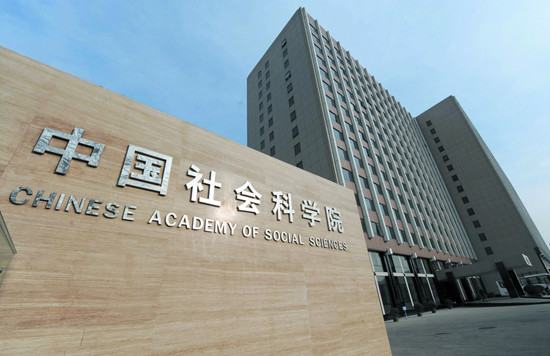
Will Default Dampen China-Argentina Ties?
The Fernández administration’s refusal to comply with a US court order to pay holdout hedge funds has once again landed Argentina in default.
China has established a remarkable presence in Latin America and the Caribbean (LAC) over the past two decades. Chinese companies are increasingly active in nearly all Latin American and Caribbean countries and across many industries. But for almost every example of successful Chinese deal-making in the region are stories of stalled or failed investments. The ongoing controversy surrounding the China Eximbank-funded Bahamar resort is one of many examples.
Bahamar’s owner, Sarkis Izmirlian, turned to China several years ago to begin developing his resort and golf complex. In 2011, China Eximbank partially funded construction of the four-hotel resort and golf complex in the amount of $2.5 billion. China Construction America, Inc. (CCA, part of China State Construction Engineering Corporation, Ltd.) was hired as general contractor for the project.
But subsequent disputes between Izmirlian and China Construction America caused the resort to miss its scheduled opening this March. Izmirlian has blamed CCA for construction delays and CCA accused Bahamar of mismanagement. Bahamar filed for bankruptcy protection in a Delaware court just this week.
Chinese media outlet Thepaper.cn indicated on July 8 that Bahamar’s setbacks are suggestive of the many challenges that Chinese companies face when operating in Latin America.
As in the case of Bahamar, Chinese firms have had plenty of disagreements with Latin America firms and governments over contract terms and other issues. These disagreements and/or other setbacks have at times resulted in stalled or terminated projects.

Mexico pulled the plug on the Dragon Mart mega-mall project in early 2015, citing environmental concerns. The commercial center would have covered nearly 1,400 acres two miles from the Caribbean Sea, just south of Cancun.
Chinese netizens aired their frustrations on social media following Mexico’s cancellation of a prestigious Chinese-led railway deal in November 2014. The rail agreement was rescinded amidst speculation that public works projects were benefiting allies of Peña Nieto and his Institutional Revolutionary Party.
Chongqing Grain Group’s attempt to purchase land in Bahia was stalled indefinitely following Brazil’s 2010 reinterpretation of its land law to restrict foreign acquisition of Brazilian land.
A Dialogue report on China’s overseas mining interests documents failed projects in other regions, including the Sicomines deal in Congo, where copper deposits were grossly overestimated. A Sinosteel project at Weld Range in Australia was suspended due to delays in developing port and rail infrastructure. Hanlong Group’s acquisition of Australia-listed miner, Sundance Resources Ltd., failed in 2013 because of insufficient funding.
Chinese companies also face stiff competition in some LAC markets. In their pursuit of greater vertical integration in global food supply chains, Chinese firms are competing against major agricultural multinationals (e.g., ADM, Bunge, Cargill, and Dreyfus), which have established a presence in international markets over the course of decades. China’s major grains trader COFCO is nonetheless seeking to compete with agricultural multinationals by engaging in targeted mergers and acquisitions.
Cultural differences and management deficiencies are also occasionally problematic.
Mining firm Shougang’s poor community relations in Peru have affected the company’s reputation for years.
Chinese firm COMPLANT, which leased land from Jamaica in 2010, initially failed to deliver on its production targets in Jamaica, both in raw sugar and milled cane. This was damaging to the company’s reputation considering that local workers are paid based on production numbers. COMPLANT’s initial low levels of production resulted in a shakeup of local management.
Although China expects some setbacks in overseas investment, the State Council, National Development and Reform Commission (NDRC), Ministry of Commerce (MOFCOM), and other organizations have introduced measures in recent years to promote increasingly successful overseas engagement on the part of public and private firms.
In 2013, the State Council published a new Catalogue of Investment Projects Subject to Governmental Verifications (政府核准的投资项目目录, 2013年本) to simplify the verification and registration procedure for outbound investments by Chinese entities.
Though primarily encouraging of more overseas investment, this guide and related MOFCOM and NDRC regulations are also intended to promote greater success in overseas dealings. New rules place pressure on individual companies to make sound investment decisions and to accurately determine risk, which could lead to more prudent investment in the coming years.
MOFCOM has also indicated a need to better advise Chinese firms (e.g., through country reports, industry guidance, e-commerce platform development, etc.) and to encourage respect for local laws and customs and greater integration with local communities.
In addition, after much criticism of Chinese companies for employing Chinese workers in overseas projects (including in the case of Bahamar), MOFCOM has begun publishing reports on the numbers of Chinese and foreign workers employed in foreign projects.
Whatever the outcome of the Bahamar deal, China is surely hoping for more and increasingly successful ventures in the region. Especially after Xi Jinping announced plans last January to achieve $250 billion in investment in LAC over the next decade.
Margaret Myers is director of the China and Latin America Program at the Inter-American Dialogue. Follow her on Twitter @MyersMargaret.
The Fernández administration’s refusal to comply with a US court order to pay holdout hedge funds has once again landed Argentina in default.
Who in China is advising on energy engagement with Latin America?
Will protesters succeed in halting the canal’s construction?

